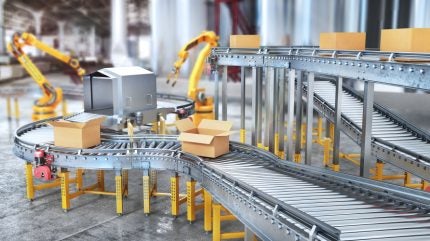
The packaging industry is undergoing a transformation, driven by advancements in automation.
From robotic arms to AI-driven quality control, automation is enhancing efficiency, reducing costs, and improving safety.
Companies investing in these technologies are seeing significant benefits, making automated systems a necessity rather than a luxury.
Boosting efficiency and precision
Automation is revolutionising packaging lines by increasing speed and accuracy. Traditional manual processes often result in inconsistencies and bottlenecks, limiting production capacity.
Automated systems, however, streamline operations by performing repetitive tasks with precision.
One key area of improvement is in filling and sealing. Automated filling machines ensure that each package contains the exact amount of product, reducing waste and improving consistency.
Sealing technology has also advanced, with automated heat sealers ensuring airtight closures that enhance product freshness and shelf life.
Sorting and labelling are other areas where automation is making a significant impact. Vision-guided robots use cameras and sensors to identify and sort products based on size, shape, or barcode data.
This not only reduces errors but also speeds up the packaging process. Automated labelling machines, meanwhile, apply labels with pinpoint accuracy, eliminating misalignment and ensuring compliance with regulatory standards.
Enhancing sustainability and waste reduction
Sustainability is a growing priority for the packaging industry, and automation is playing a crucial role in reducing environmental impact. By optimising material usage and minimising waste, automated systems are helping companies meet their sustainability goals.
For instance, automated cutting machines precisely measure and cut materials, reducing excess packaging. This not only conserves raw materials but also lowers costs associated with disposal and recycling.
Similarly, automated palletisation systems ensure that products are stacked efficiently, maximising transport space and reducing fuel consumption.
Automation is also improving recycling efforts. Advanced sorting machines can separate different types of packaging materials, increasing recycling rates and reducing contamination.
This is particularly important as governments introduce stricter regulations on waste management and recycling.
Improving workplace safety and labour dynamics
The introduction of automation is transforming the workforce within the packaging industry. While concerns about job losses persist, automation is not necessarily replacing workers—it is changing their roles.
Rather than performing repetitive or hazardous tasks, employees are shifting towards monitoring, maintaining, and programming automated systems.
Workplace safety has seen considerable improvements with automation. In high-risk environments, such as food and pharmaceutical packaging, automated systems reduce human contact with potentially harmful substances.
Robotic arms can handle heavy lifting, minimising the risk of strain or injury for workers.
Labour shortages have been a challenge for the industry, particularly in regions where skilled workers are in short supply. Automation helps bridge this gap by ensuring that production lines continue running smoothly, even during staffing shortages.
Moreover, companies are investing in training programmes to equip workers with the skills needed to manage automated systems, ensuring long-term employment opportunities.
The integration of automation in packaging lines is not just a passing trend—it is shaping the future of the industry. By improving efficiency, enhancing sustainability, and ensuring worker safety, automation is driving progress and innovation.
As technology continues to evolve, companies that embrace automation will remain competitive, adaptable, and prepared for the challenges of an ever-changing market.



